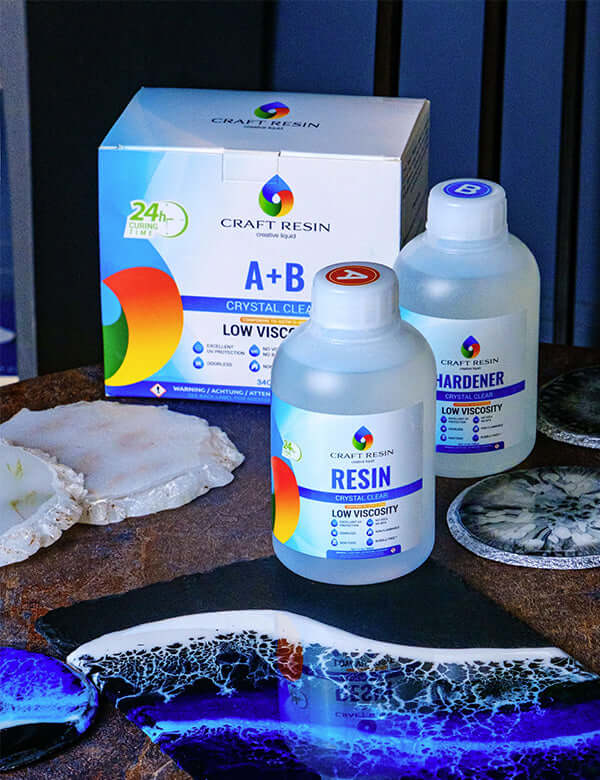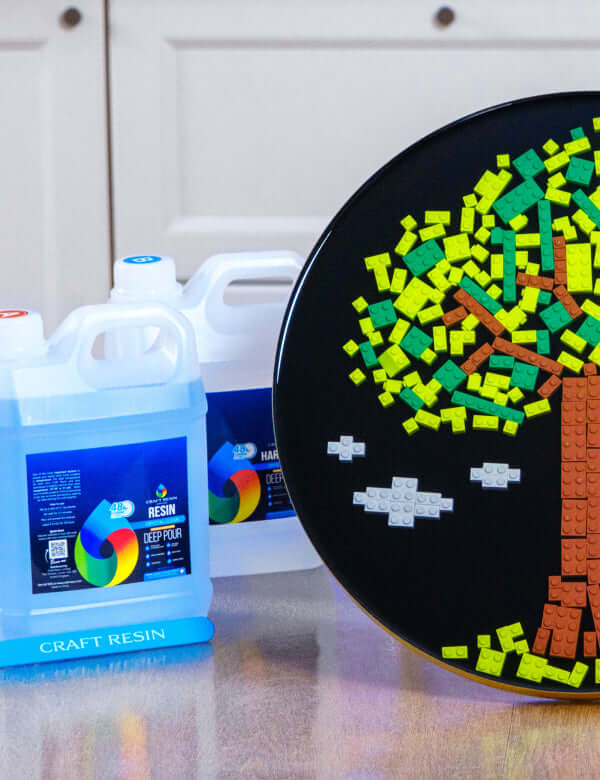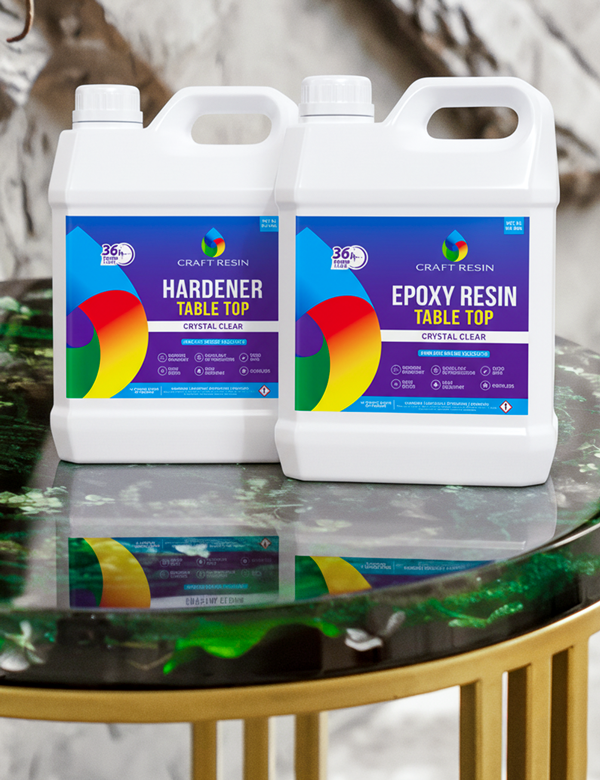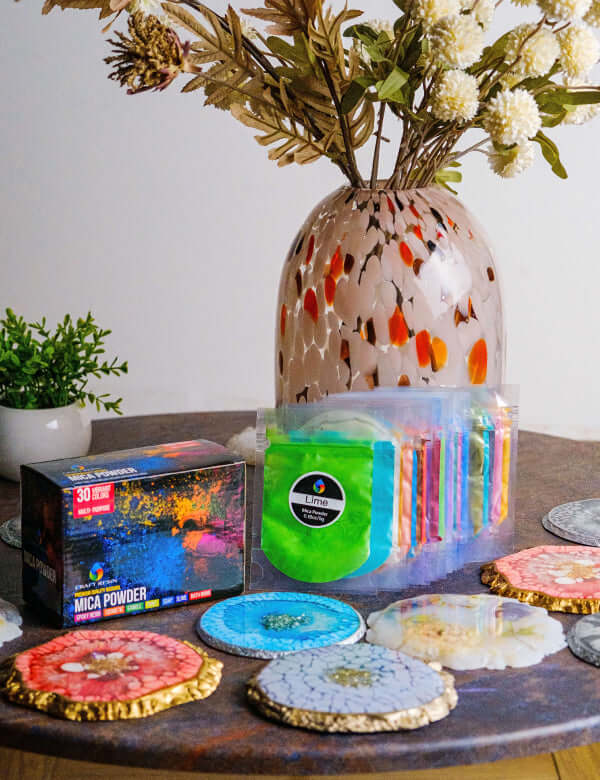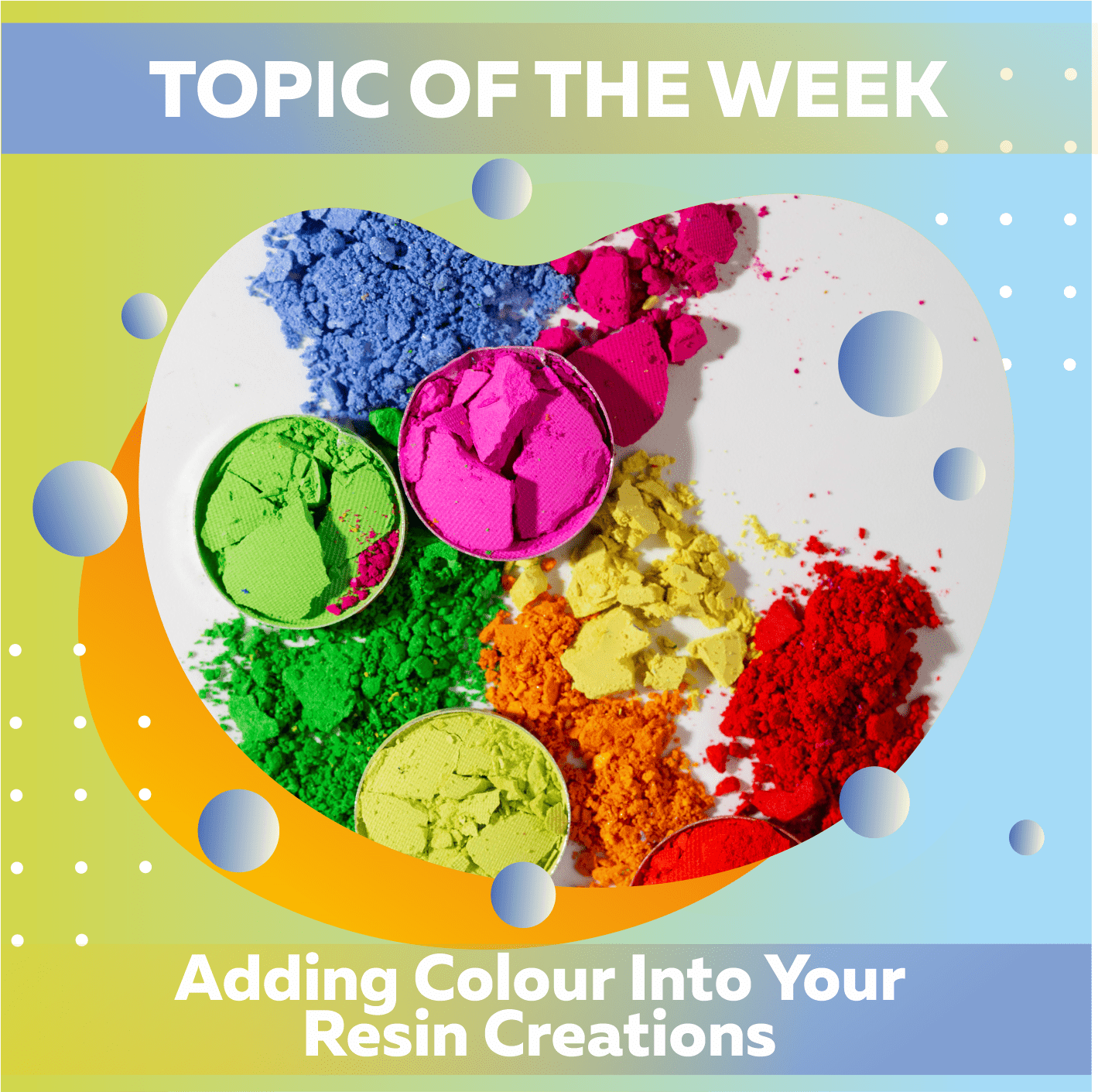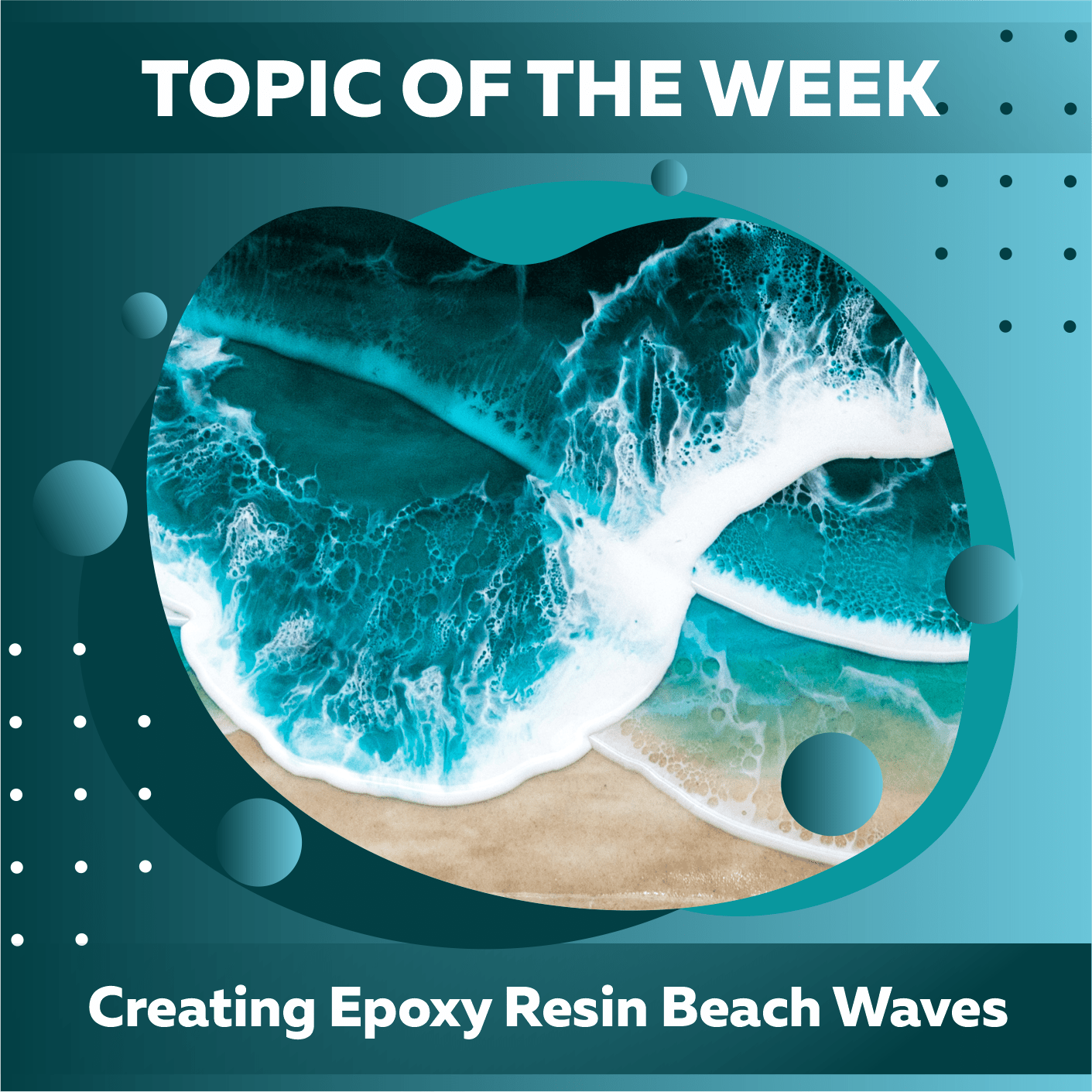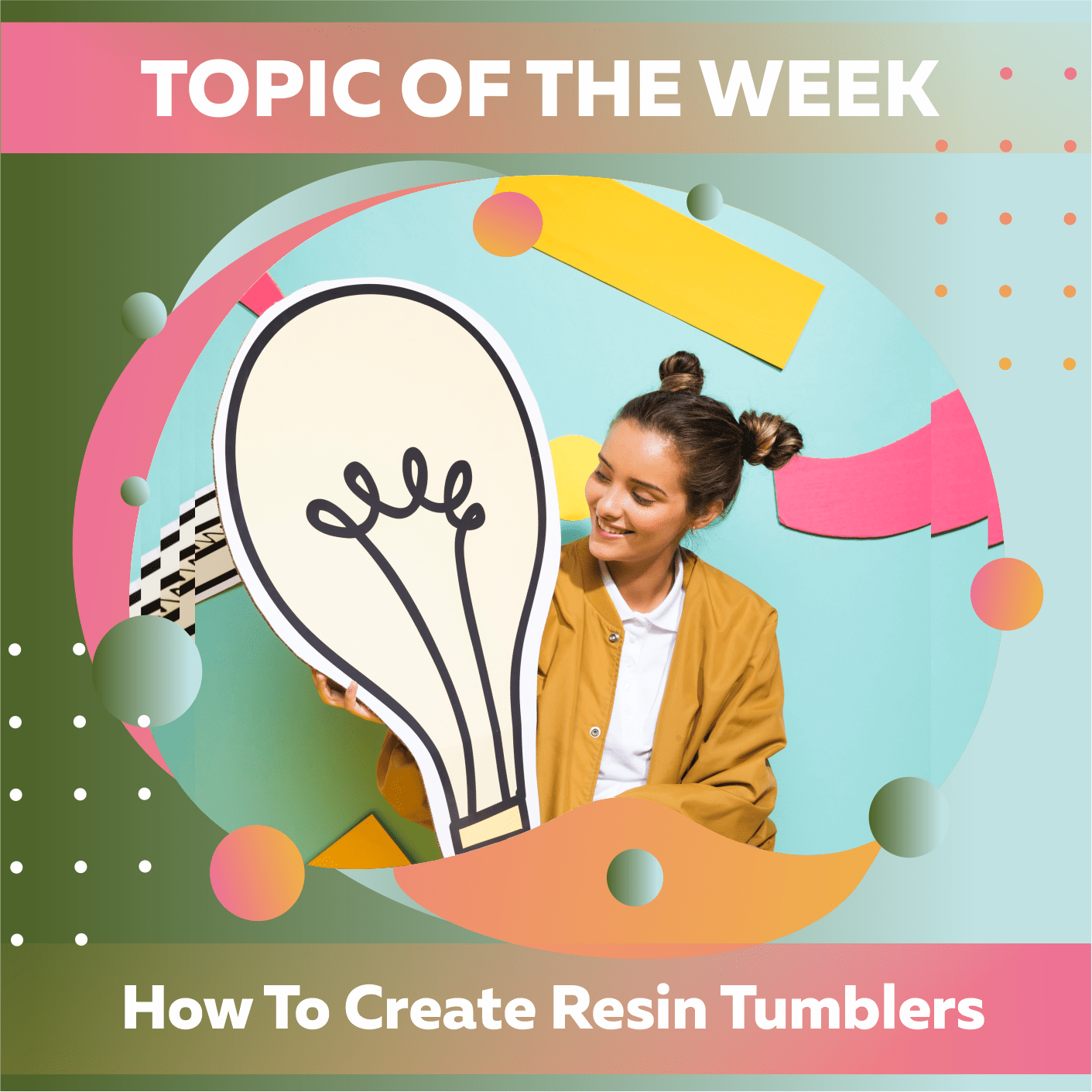The material will be colorless if the pigment is not added to the substance produced by the epoxy resins we employ. Craft Resin may be colored using various colorants, and the process can be done in several different ways.
In the blog article for this week, I will go through a few of them so that you may make an educated decision on the colorants you use in the resin sculptures you create 🌈

This list is not exhaustive, and there may be additional additives that you can use to color your clear epoxy resin gallon creations; some of them may require testing to discover whether or not they work, how they turn out, and whether or not they can be manipulated to produce various patterns in your crafts. This list can be found here. Creativity requires taking chances, which is part of the fun, so let your imagination go wild with color!
When coloring epoxy resin, one of the essential rules to remember is that you should never add more than 6% of a given colorant to the overall volume of the Craft Resin mix. This indicates that you should only add up to 9 ml of color to the mixture if the entire volume of your resin and hardener combination is 150 ml.
Because most colors that may be used with resin provide deep colours with only a tiny quantity of additives, it is unlikely that you will ever need to use more than 6% colorant in any project.

The time has come, so let us get started...
Mica Powders:
We will start with these because we are the ones who offer them. Mica powders are one of the most straightforward colorants when working with epoxy resin, making them an excellent option for beginners.
We provide packets of Mica Powder that contain all 30 hues, guaranteeing that you and your clients will always have a wide variety of options available. Although there is just 0.18 fl oz of color in each packet, even a small amount of these brilliant colors may be used greatly. It is important to remember that the 6% rule does not apply in any way while working with mica powders.
To integrate Mica Powder into resin, add it to the mixture and stir for an extra minute. Now that you've colored the resin, you can start pouring it into molds.
When adding colorants to a mixture, it is recommended that the high quality epoxy resin and hardener be mixed in a clear condition for five minutes before the colorant is added. If you follow these steps, you can tell if the combination is ready to use by the presence or absence of streaks.
The Mica Powder may be added directly to the mixing pot, multiple pots can be combined to create a wider range of colors, or the powder can be applied to the mold with a paintbrush. This is great for making mermaid tails or fish with scales, as it may leave a very subtle coloring effect on your creations.
Mica powders have cosmetic applications and may be used in cosmetics, candles, and more. They are not limited to usage with epoxy resin, though. Mica powders are a lot of fun to experiment with, and the amazing things you can create with them will astound you.

ACRYLIC PAINTS:
While combining acrylic paints with Craft Resin is fine, doing so may reduce the glossiness of your resin creation and give your work a less shiny appearance. Some people's work will benefit greatly from this impact, while a more glassy presentation may better serve others' goals.
Alcohol Inks:
Many people use the art created with Petri dishes as an example of the spectacular effects that can be obtained with alcohol inks. Alcohol inks can also be used to color epoxy resin sculptures. Petri dish art is popular among many people. It is a well-liked option since it has the potential to provide colours that are dazzlingly brilliant and aesthetically pleasing.
If you have utilized alcohol inks in your resin product, you run the risk of destroying it if you use a heat torch. Because alcohol may catch fire, employing it to get rid of bubbles might lead to more serious side effects than just thinning the eyebrow hairs.
Instead, clean the surface of your curing object with rubbing alcohol to eliminate air bubbles, warm your resin and hardener in their sealed bottles for a few minutes in a sink of warm water before using them, and mix your resin very carefully to avoid the formation of air bubbles.
If you want to use a significant amount of alcohol ink in your project, ensure that your workspace has appropriate ventilation and wear a mask. This is because alcohol ink can affect both the flammability and the toxicity of Craft Resin.
BOMBAY INK:
Similar to Alcohol Ink in appearance is Bombay Ink, often known as India Ink, but when combined with resin, the color will retain its clarity. India ink and Bombay ink are pigment-based media, whereas alcohol ink is a dye-based medium.
Thus, alcohol ink fades with time, but Indian ink and Bombay remain legible.
Many famous resin painters are switching from Alcohol Ink to Bombay/Indian ink since the former is a superior option. Searching for "Bombay/India Ink" on Google or YouTube will turn up a few tutorials on how to use it, and we do not doubt that many more will be posted shortly.
You should know that oil paints and Craft Resin do not mix well and will make your resin mixture difficult to work with, so keep that in mind.
Coating oil-painted artwork with Craft Resin is possible, but only after first adding a base layer of a sealer like Mod Podge and allowing it to cure. This prevents the potentially disastrous mixing of resin and oil paint. Your oil painting may require many weeks to fully cure before applying the sealer, so be patient while it dries.
ADDING COLOURFUL OBJECTS:
There is also the option of using additives to color your clear epoxy resin in the UK. Glitter, dichroic inlays, temporary tattoos, dried flowers, or even Legos can be used to give a burst of color, and these are just a few of the numerous options available.
Once more, let your creativity run wild and experiment with your creations using various bright materials and details. Until you give anything a shot, you won't know whether it will have a pleasing appearance.
Check out our Instagram account if you're seeking inspiration to get your creative juices flowing. Find out what they use to make it, and try incorporating some of those components into your art. It is not considered plagiarism to experiment with a technique, pattern, or additive previously used by another artist since you were moved to do so by their work. Because no two epoxy resin projects will ever come out the same, stealing another person's work is impossible.
Our YouTube channel has many tutorials that teach you how to add colourful items to resin. Check them out today:
Lastly, have fun getting colourful with your projects. We'd love to see what you're creating and all the beautiful colours; please tag us if you share your Craft Resin epoxy resin creations on Instagram @craft.resin.
Topic Of The Week Giveaway:
We have attached a giveaway to this Topic Of The Week announcement on our Instagram platform; this is helping us to spread the knowledge of how to use epoxy resin further, but also enabling anyone who helps us to share this information to win free resin and mica powders.

To enter the weekly giveaway, please see the latest post pinned to the top of our Instagram feed and follow the instructions to enter:
Team Craft Resin

